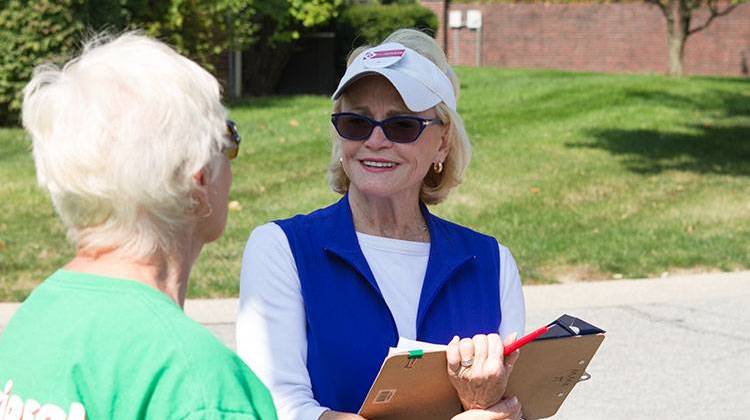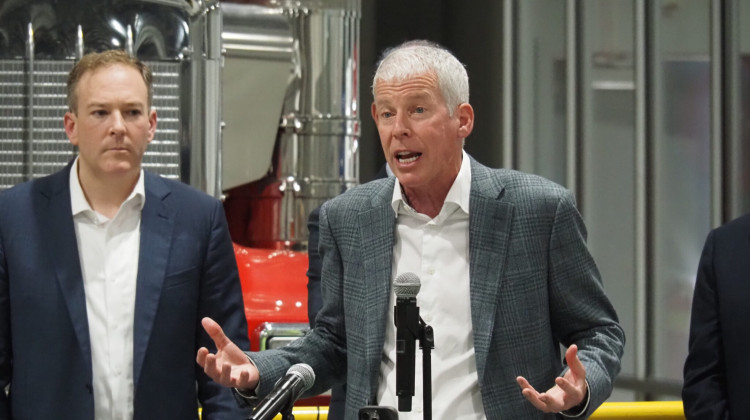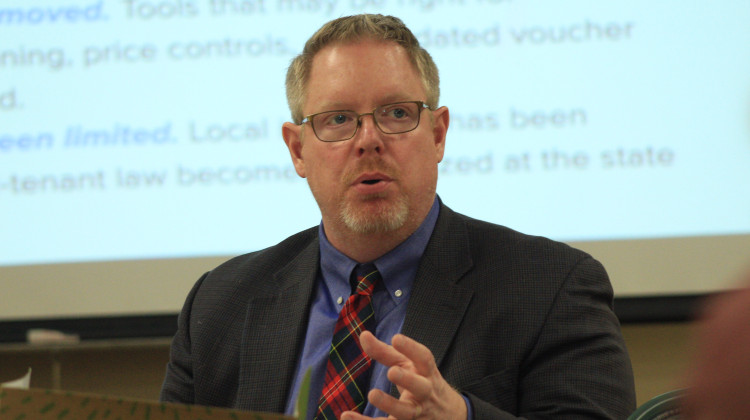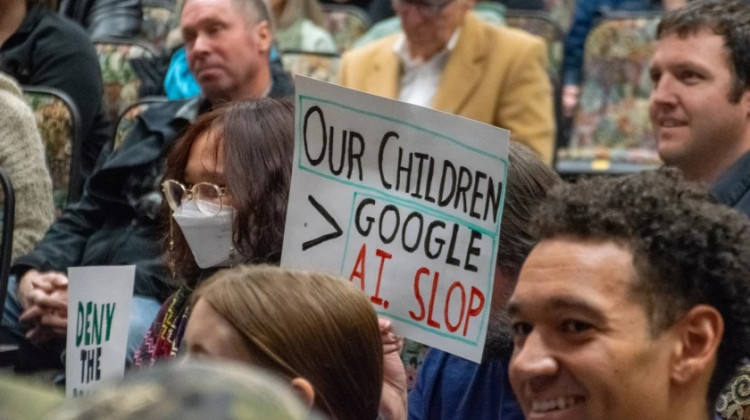
Democrat Pam Hickman talks with a voter while campaigning in a northeastside neighborhood.
Doug JaggersINDIANAPOLIS – With another knock on the door, Indianapolis City-County Councilor Pam Hickman hoped to find another potential voter at home.
Her path to re-election has been shaped by major shifts in the local political landscape. Districts have been redrawn and the four at-large council seats, including the one Hickman occupies, are being eliminated.
“Citizens need to understand that their councilor is the only person that can help them after January 2016,” Hickman said. “There won’t be an at-large you can contact if your councilor is not on board with you.”
Hickman, a Democrat, is now running for the District 3 seat against incumbent Republican Christine Scales.
The at-large seats have represented all of Marion County since UniGov, the combination of Marion County and City of Indianapolis government, began in 1970. The political leanings of those seats always followed the party of the mayor up until 2011. Republican Mayor Greg Ballard won re-election but Democrats took all four of the at-large seats and a 16-13 majority on the council. That majority has since fallen to 15-14.
In 2013, the primarily Republican state legislature passed a bill that eliminated the at-large positions. Many Democrats claimed the change was meant to tip the balance of power back to the GOP.
Scales said she was the one Republican to lobby against the restructuring.
“I did not like how that major change in our governments took place – without a lot of input from citizens in the county,” Scales said. “I’m a big proponent of making sure we have integrity of process and also that we don’t abuse power.”
The shifting of county district lines proved to be even more controversial. Outgoing Republicans on the council redrew district lines following the 2010 census as is required by law. However, some Democrats, including Councilor Zach Adamson, felt the lines unfairly favored Republicans in future elections.
“The essence of the mission was corrupt,” Adamson said. “I think the product is always going to be corrupt. You’re not going to end up with a healthy map either way, whether the council comes back Democrat or Republican.”
The issue was brought before the Indiana Supreme Court where a 2014 ruling allowed the new lines to stand.
Hickman and Adamson both claim the redistricting and the loss of the at-large seats will hinder proper representation on the council. University of Indianapolis political science professor Laura Merrifield Albright refuted those concerns.
“In some ways we’re making it more equitable,” Albright said. “The fact that every district for sure gets one person – but no more than one because we don’t have those at-large seats – in some ways makes it more democratic.”
Council Minority Leader Mike McQuillen agreed, adding a smaller council could lead to better efficiency in passing legislation.
“I think the elimination of the four [at-large seats] does make [the council] run a little smoother,” McQuillen said. “I think it will be a positive as we move forward next year.”
The exact makeup of the seats will be determined during the Nov. 3 election, but some political observers believe these changes will allow Republicans to retake the majority on the new, smaller council.
Redrawing the lines
move the slider on the map below to compare the old Marion County district lines to the new district lines.
 DONATE
DONATE






 View More Articles
View More Articles





 Support WFYI. We can't do it without you.
Support WFYI. We can't do it without you.